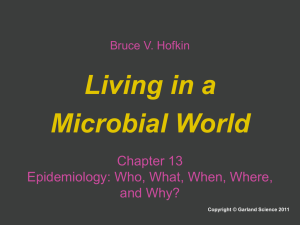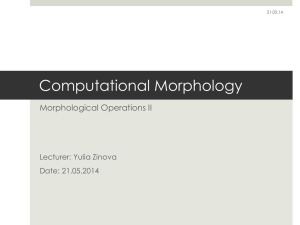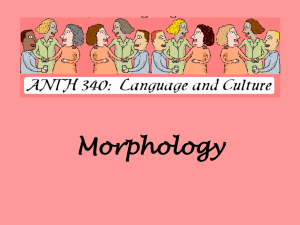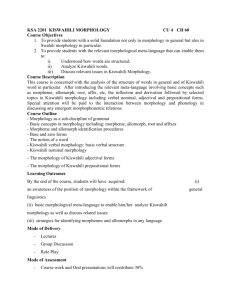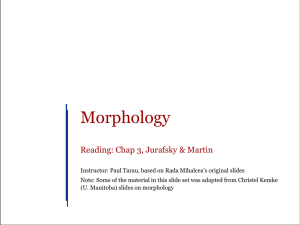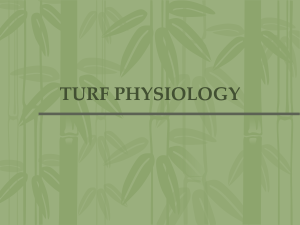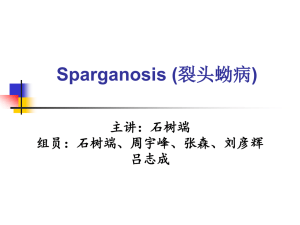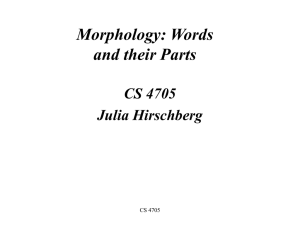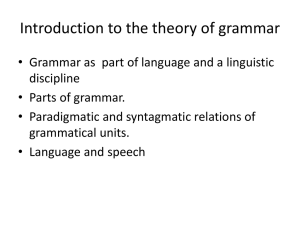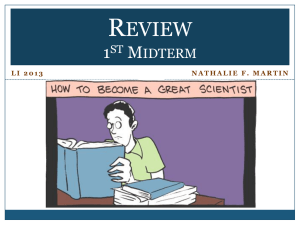Urban Morphology: City Form & Design Principles
advertisement
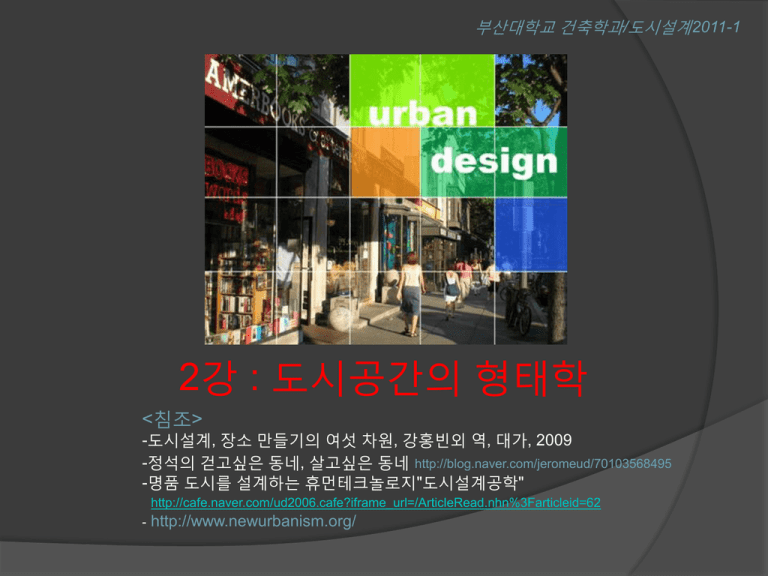
부산대학교 건축학과/도시설계2011-1 2강 : 도시공간의 형태학 <침조> -도시설계, 장소 만들기의 여섯 차원, 강홍빈외 역, 대가, 2009 -정석의 걷고싶은 동네, 살고싶은 동네 http://blog.naver.com/jeromeud/70103568495 -명품 도시를 설계하는 휴먼테크놀로지"도시설계공학" http://cafe.naver.com/ud2006.cafe?iframe_url=/ArticleRead.nhn%3Farticleid=62 - http://www.newurbanism.org/ Urban morphology is the study of the form of human settlements and the process of their formation and transformation. The study seeks to understand the spatial structure and character of a metropolitan area, city, town or village by examining the patterns of its component parts and the process of its development. This can involve the analysis of physical structures at different scales as well as patterns of movement, land use, ownership or control and occupation. Typically, analysis of physical form focuses on street pattern, lot (or, in the UK, plot) pattern and building pattern, sometimes referred to collectively as urban grain. Analysis of specific settlements is usually undertaken using cartographic sources and the process of development is deduced from comparison of historic maps.. Special attention is given to how the physical form of a city changes over time and to how different cities compare to each other. Another significant part of this subfield deals with the study of the social forms which are expressed in the physical layout of a city, and, conversely, how physical form produces or reproduces various social forms. commercial, industrial and other uses, among other things. The essence of the idea of morphology was initially expressed in the writings of the great poet and philosopher Goethe (1790); the term as such was first used in bioscience. Recently it is being increasingly used in geography, geology, philology and other subjects. In American geography, urban morphology as a particular field of study owes its origins to Lewis Mumford, James Vance and Sam Bass Warner. Peter Hall of the UK is also a central figure. Urban morphology is also considered as the study of urban tissue, or fabric, as a means of discerning the underlying structure of the built landscape. This approach challenges the common perception of unplanned environments as chaotic or vaguely organic through understanding the structures and processes embedded in urbanization. Some locked concepts Urban morphology approaches human settlements as generally unconscious products that emerge over long periods, through the accrual of successive generations of building activity. This leaves traces that serve to structure subsequent building activity and provide opportunities and constraints for city-building processes, such as land subdivision, infrastructure development, or building construction. Articulating and analysing the logic of these traces is the central question of urban morphology. Some locked concepts(cont.) Urban morphology is not generally object-centred, in that it emphasises the relationships between components of the city. To make a parallel with linguistics, the focus is placed on an active vocabulary and its syntax. There is thus a tendency to use morphological techniques to examine the ordinary, non-monumental areas of the city and to stress the process and its structures over any given state or object, therefore going beyond architecture and looking at the entire built landscape and its internal logic. The tool for analysis Urban Morphology have some theories like: Space syntax, Figure and Ground cities Three Theories of Urban Spatial Design: 1.Figure and Ground 2.Linkage theory 3.Place Theory Figure and Ground theory is founded on the study of the relative land coverage of buildings as solid mass (figure) to open voids (ground) Each urban environment has an existing pattern of solid and voids, and figure and ground approach to spatial design is an attempt to manipulate these relationships by adding to, subtracting from, or changing the physical geometry of the pattern (cont.) The objective of these manipulations is to clarify the structure of urban space in a city or district by establishing a hierarchy of spaces of different sizes that are individually enclosed but ordered directionally in relation to each other.(Roger Trancik,1986:97.in Finding the Lost Space) The linkage theory is derived from "lines" connecting one element to another. These lines are formed by street, pedestrian ways, linear open spaces or other linking elements that physically connect the parts of the city. Schools of thought In a broad sense there are three schools of urban morphology: Italian, British, and French. The Italian school centres around the work of Saverio Muratori and dates from the 1940s. Muratori attempted to develop an 'operational history' for the cities he studied (in particular Venice and Rome), which then provided the basis for the integration of new architectural works in the syntax of the urban tissue. Stemming from this view are contributions such as Gianfranco Caniggia's, which conceptualise the city as an organic result of a dynamic procedural typology, which see political-economic forces as shaping a built landscape already conditioned by a particular logic, set of elements, and characteristic processes. Schools of thought(cont.) The British school centres around the work of M.R.G. Conzen, who developed a technique called 'town-plan analysis.' The key aspects for analysis according to Conzen are: 1.The town plan 2.Pattern of building forms 3.Pattern of land use The town plan in turn contains three complexes of plan element: 1.Streets and their arrangement into a street-system 2.Plots (or lots) and their aggregation into street-blocks 3.Buildings, in the form of the block-plans. Schools of thought(cont.) For Conzen, understanding the layering of these aspects and elements through history is the key to comprehending urban form. Followers of Conzen such as J.W.R. Whitehand have examined the ways in which such knowledge can be put to use in the management of historic and contemporary townscapes. The French school, based principally at the Versailles School of Architecture, has generated extensive methodological knowledge for the analysis of urbanisation processes and related architectural models. Much emphasis is placed upon the importance of built space for sustaining social practices; the relationship between the built landscape and the social world is dialectical, with both shaping the other. 도시형태의 네 가지 구성요소Conzen, 1960 1) 토지이용 : 새로운 용도로 인하여 재활용, 재개발/새로운 프로젝트 건설, 합 필/필지분할 -> 가로패턴에 영향 2) 건축물 : 개발과정에 따라 필지형태의 변화 -> 가로형 건물의 개발에 영향 - 세장형 : 18-19세기의 파리 등 중세도시, 상해/호치민 등의 필지 -> 재개발 - 격자형 : 신개발 도시의 필지 전통적 도시공간/근대적 도시공간 전통적 도시공간 : 연속된 Solid, 가로와 광장 을 규정하는 도시블럭, 작은 규모의 격자형 가 로망 + 대규모의 종교/공공건축물 근대적 도시공간 : 독립적인 건축물과 넓은 도 로망(수퍼블럭) Parma의 Figure & ground diagram과 Saint-Die 도시형태의 네 가지 구성요소(cont.) 3) 필지유형 : Urban block(cadastral unit) - back to back, through plots - 개발과정에서 분할과 합병이 이루어짐 4) 가로패턴 : cadastral pattern - 도시블럭의 배치 형태 및 블록 사이의 공공공 간과 이동통로 또는 공공공간망의 배치형태 - 누적된 가로패턴의 변화(palimpsest) : 옛 가로망 + 새로운 가로망 도시형태의 네 가지 구성요소(cont.) 플로렌스중심부의 가로패턴 플로렌스중심부의 가로패턴 블록과 가로 투과성Permeability : 이동경로의 선택이 얼마나 다양한지를 의미 - 시각적 투과성 : 일정한 환경에서 통로가 얼마나 보이는가 - 물리적 투과성 : 그 통로를 실제로 지날 수 있는가와 관련 접근성Accessibility : 실제 공간적 척도로서 개인과 가로패턴 간의 상호작용의 결과물 작은블록섬세한 도시입자 - 이동경로가 조밀하고 다양하며 투과성이 높음 - 블록이 작을수록 시각적 투과성 또한 높아져 경로의 파악과 선택이 용이함 격자형 구조 정형 격자/부정형 격자시각적 투과성이 낮음 - 부정형격자 : 대부분의 역사적인 도시가로자연적으로 진화된 유기체적 형태 - 정형격자 : 계획도시의 가로 -> Savannah의 변화, 북경, 로마, 워싱턴 토론 : 정형/부정형격자 가로의 사례와 장단점 블록과 가로(cont.) 최근의 새로운 시도들 John Nash의 Park Village Park Village West lies within a triangle, with Albany Street on the west and the Regent's Canal to the north-east, the Barracks in Albany Street being to the south. The villas are grouped round an irregular horse-shoe line that leaves and re-enters Albany Street. Olmsted & Vaux의 시카고 주변 Riverside와 Letchworth Garden - 곡선도로와 공간적 연속성/반면 낮은 투과성 1920-30년대 : 격자망의 변형 Unwin & Parker의 Cul-de-sac 공공공간망과 기간시설망 기간시설망capital web의 주요요소 - 가로 패턴 공공공간망 : 이동공간인 동시에 사회적 공간 -보행과 교류/자동차 이동의 갈등 - 공공공간을 점령한 자동차로 인하여 가로의 사회적 기능이 위축됨 -> 결국 가로는 도로가 됨 기간시설망의 요소(David Crane) : 블록의 패턴, 공공공간의 네트워크, 기본도 시 기반시설 등 공간을 규정하는 건물과 오브제로서의 건물 도시블럭을 규정하는 건물- 최근의 변화 - 공간을 정위하고 에워싸는 건물 -> 오브제로서의 건물로 변화 모더니스트들의 설계 - 내부의 필요성에 의한 경계 -> 환경 속의 오브제 - 주변의 공간이 자유롭게 흐르도록 유도 전통적인 가로-도랑, 깊은 틈, 좁은 통로 등으로만 인식) - 공중보건과 관련하여 밀도, 도로폭, 사선제한, 지하공간 등의 구체적 지침 - 오브제 건물의 특징적 디자인을 강조하는 경향 -> 나홀로 이미지 전통도시 공간의 강한 오브제 건물 - 기존의 블록체제에 영향 -유럽 전통적 도시(연속된 파사드에 의한 가로 이미지)의 변형을 가져옴 -> 따 라서 규범이 요구됨 모더니즘적 도시개발로 인한 변화 - 개별적인 건물들 간에 남겨진 무의미한 공간이 공공공간망을 형성 - 개별건물들의 무관한 집합체 형성 > 도시공간의 공간적 맥락 소멸 - 도로에 의해 분리되고 단절되는 도시공간 양산 전통도시공간으로의 회귀 최근 도시설계의 새로운 경향 : 전통도시의 공간적 맥락을 재생하는 시도 - 개별사업의 개발과 도시공간 맥락의 관계 조절 > Positive space의 창출 - 연속된 개별건축물 > 블럭구성 > Positive space 형성(전통도시) Colin Rowe - 1960년대초 : 역사적 도시공간구조와 전통공간유형을 새로운 개발과 접목하 는 연구 - figure & ground diagram 이용 > 건물이 단순한 오브제가 아닌 배경 으로 봄 - Collage City, 1978 : 오브제가 조각처럼 자유롭게 서 있는 건물/맥락은 건물 들이 구성하는 배경기반 -> figure & ground diagram으로 전통도시와 근대도 시를 비교 Figure Ground from The Genealogy of Cities 전통도시공간으로의 회귀(cont.) Aldo Rossi The Architecture of the City,1982 - 건축유형(형태학적 개념)과 유형학의 개념 부활 > 반복, 복재 가능한 3차원 적 원형template - 경험과 선례에 의한 학습 과정을 구체화, 조직화하여 전통적인 방법으로 기 능을 고려<건축유형의 신뢰> Aldo Rossi, La città analoga, Biennale di Venezia 1976 전통도시공간으로의 회귀(cont.) Gosling & Maitland Concepts of Urban Design,1984 - 20세기의 변형(끔찍한 혁신)으로 파괴되기 전에는 오랜 세월 도태와 선정과 정을 거쳐 진화한 도시의 유형들이 이미 형성되어 보편적이고 일관된 공간 활 용법을 제시 - 핵심유형 : quarter, 도시블록 + 가로, 대로, arcade, colonnades 등 전통도시공간으로의 회귀(cont.) Rob Krier Urban Space, 1979 - 도시광장의 유형학 발전 가로․블록구조와 도로망 근대도시 - 조밀한 격자망 > 수퍼블록이나 고립된 영역을 둘러싸는 도로망으로 변화 -교통기반시설의 도입 > 교통공간과 사회적인 요구간의 치열한 갈등 초래 > 차도/인도의 분리 - 자동차 전용 도로망의 강화 > 교통부하에 따라 도로의 위계를 구분 영국 도로설계지침 : 주집분산도로, 지구집분산도로, 지구도로, 주거지접근 로 구분 전통적 격자망에서 수퍼블록으로 가로․블록구조와 도로망(cont.) Albert Pope Ladders, 1996 - 접근이 제한된 고속도로 : 격자망의 연속성 을 단절하고 주요경로만 강조 > 도시조직파괴 +경로의 선택권 제한 - 격자망의 침식현상pod system : 주요도로의 진출입을 제한 > 수퍼블록으로 변화 - cul-de-sac : 단지 장소이동을 위해 지나치는 도로 - 사다리망 : 외부인을 배척하는 영역 형성 > 사회성․안정성을 충족할 수 있으나 gated community를 형성함 가로․블록구조와 도로망(cont.) Clarence Perry의 근린주구neighbourhood unit - 간선도로로 구획된 수퍼블록의 영역+위계에 따른 도로체계 가로․블록구조와 도로망(cont.) Buchanan Traffic in Towns, 1964) - 환경지역 간선도로로 구획되고 통과교통이 배제된 복합용도의 수퍼블록 제안 - Lefebvre1991 : 쉽게 건널 수 없는 간선도로로 인하여 도시공간이 조각나고 붕괴됨을 비판 가로․블록구조와 도로망(cont.) Appleyard & Lintell1972 : 샌프란시스코의 세 길을 비교 분석 > 교통량이 많지 않은 도로에서 사회적 교류가 많이 발생가로의 사회적 역할 비교 누에고치형 개발pod development 하나의 독립된 기능이 간선도로와 직접 연결 되는 공용주차장으로 둘러싸이는 형식의 개 발, 중심지 밖의 복합개발과 외곽도시에서 나 타나는 전형적인 개발 형태 - 주위로부터의 고립되고 단절되며 지역의 맥락/자연경관의 고려 배제 - 누에고치간 보행의 흐름은 없으며 자동차 의 흐름만 있으며 표준화되어 반복 - 도시공간이 고속도로와 주차장으로 연결된 섬으로 변화Graham & Marvin, 2001 - 쓰고 남은 공간의 바다 위에 떠 있는 요란한 섬들로 재구성Bentley, 1999 누에고치형 개발pod development(cont.) Cul-de-sac : 누에고치형 개발의 유형 - 비슷한 사적 영역이 끝없이 이어지는 형체없는 섬 - 물리적․사회적으로 외부세계와 단절되고 자동차에만 의지하는 고립된 동네 - 현대도시의 교외지역 - 이러한 섬들의 집합체 가로공간으로의 회귀 - 자동차와 보행의 두 교통체계의 분리(보차분리)와 중첩(보차혼용)...? - 도로의 교통/가로의 사회적 공간간의 갈등과 충돌 - 교통수단들을 충돌없이 잘 조화시키는 섬세한 도시설계가 요구됨 보차혼용도로, 주거지 내 속도제한구역Home Zone, 보행자우선가로의 사례 woonerf David Engwicht1999 : 가로 의 복원사회적 공간을 회복하 는 과정 - 도시의 이동공간보다 교류 공간에 우위를 두고 설계할 것을 주장 - 교통을 줄이는 5R : replace, remove, reduce, reuse, reciprocate woonerf woonerf 도시블록패턴 도시블록의 배치와 구성을 통하여 이동의 형태와 향후 개발의 방향을 설정할 수 있음 - 가로패턴은 도시기반시설 중 가장 경고한 요소이므로 미기후, 바람, 일조조 건 까지도 고려하여 내구성이 높은 형태와 규모로 설정 - 작은 블록과 조밀한 보행자공간과 함께 큰 블록과 건축유형의 적절한 배치, 공개공지 등의 적절한 균형 - 기존의 도시조직과 과거의 공간패턴을 활용하여 고립된 조각들을 재통합하 고 신개발과 기존의 공간적 맥락을 통합할 새로운 연결고리 반영 생동감과 침투성, 시각적 묘미와 식별성을 높이는 데에는 작을 블록이 적합 - 이러한 환경기반 위에서 도시문명과 사회, 문화, 경제의 교류 발생 - 중정이 있는 단일건물 전체가 하나의 작은 블록을 형성하기도 함 - perimeter block : 중앙공간을 다양한 용도로 활용 가능 perimeter block
